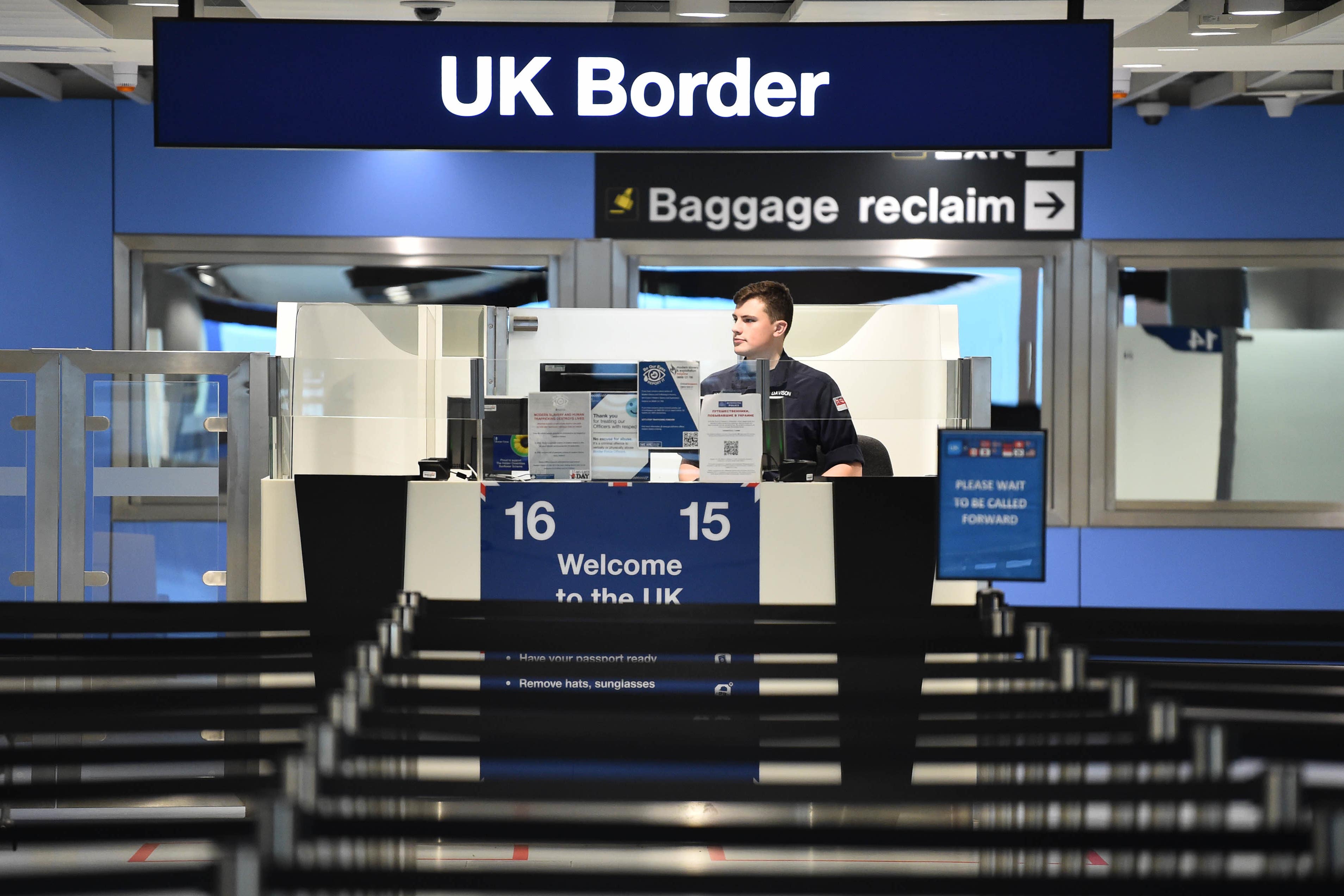
Net migration to the UK is set to surge to around 245,000 annually over the next few years, despite Rishi Sunak’s vow to drive down the number of new arrivals.
The Office for Budget Responsibility‘s forecast on Wednesday was revised up from 205,000 in its November forecast and nearly double the number projected in March, which was 129,000.
The increase comes after migration to the UK in 2020 and 2021 was affected by the global Covid pandemic, when people were largely unable to travel as countries tried to tackle the spread of the virus.
At the same time, the number of EU nationals coming to the UK has fallen dramatically since Brexit. So what’s driving the rise?
Is migration going up?
According to Office for National Statistics (ONS) data net migration for the year ending 2022 was 504,000.
The ONS data said that net migration to the UK was 273,000 in the year ending June 2018; the figure for 2019 was 226,000.
Migration to the UK jumped significantly in 2022 due to a number of factors, mainly the war in Ukraine, a new visa system for Hong Kongers and the Afghan resettlement scheme.
“A series of world events have impacted international migration patterns in the 12 months to June 2022,” the ONS said referencing each of the factors above.
“Taken together these were unprecedented.”
An increase in the number of foreign students coming to study in the UK added to the total figure in 2022, the ONS added.
In 2014, net migration was 260,000; 330,000 in 2015; 335,000 in 2016 and 230,000 in 2017. These figures do not include people who arrive in the UK illegally.
The total number of people who migrated to the UK in 2022 and were not part of any of the three schemes above was 318,000 – that is assuming that all Hong Kongers who were granted a visa took up the offer to come.

Where are people coming from?
The spike in numbers in 2022 was primarily driven by the immigration of non-EU nationals, who accounted for an estimated 66 per cent of total immigration.
The immigration of EU nationals remained broadly stable in the past year, accounting for 21 per cent of total immigration.
Home Office estimates suggest that around 89,000 Ukraine Scheme visa-holders arrived in the UK up to the year ending June 2022.
Statistics indicate that around 76,000 visas were issued to people from Hong Kong as part of the British Nationals Overseas programme, “although not all people with a visa will travel to the UK”.
The ONS said it was working with the Home Office to resolve data issues to get a more complete picture of how many people had arrived in the UK from Hong Kong.
Around 21,000 people arrived in the UK as part of the Afghan Resettlement Programme.
Why are people migrating to the UK?
The ONS said that, for the year ending June 2022, those arriving in the UK on study visas accounted for the largest proportion (39 per cent) of long-term immigration of non-EU nationals – up from 143,000 in the previous year.
“It is possible that with the lifting of travel restrictions in 2021, we are seeing more students arriving in the UK for their studies after studying remotely for their courses during the coronavirus (Covid-19) pandemic,” the ONS said.
“It is too early to say whether this trend will continue.”
Those arriving on “other” visas accounted for the second-largest proportion of non-EU immigration (39 per cent) at an estimated 276,000 in June 2022, an increase from 91,000 in the year ending 2021.
This group includes people who came to the UK under visas classified as family, protection, settlement, visit, other and those that did not fit into any designated classifications.

What about immigration from the EU?
In January 2021, the UK introduced a new immigration system that ended the free movement of people between the UK and EU and the wider European Economic Area.
The new rules came into force at the same time as the UK-EU Trade and Cooperation Agreement and the new system applies to all those moving to the UK for work, study or family reasons, with the exception of Irish citizens.
Migrants from the rest of the world also face new rules post-Brexit, but these are considerably more liberal than those applied to workers and students from the EU.
Migration from EU countries fell substantially after the Brexit referendum, having peaked at 280,000 in 2016.
According to the Oxford University Migration Observatory, just 43,000 EU citizens received visas for work, family, study or other purposes in 2021.
What impact has Brexit had on the UK workforce?
The UK is currently experiencing a shortage of both skilled and unskilled workers.
The lack of EU citizens coming to the UK has had a huge impact on Britain’s economy, particularly in the construction and hospitality sectors, experts say.
The building sector has suffered from an acute lack of workers since Brexit caused many European labourers to return to the EU.
What is the government’s position on immigration?
Boris Johnson, the former prime minister, essentially won the 2019 general election on a pledge to “get Brexit done”.
He and other Brexiteers said that leaving the EU would allow the UK to take back control of its borders and bring down migration, meaning more and better-paid jobs for British workers.
Suella Braverman, the home secretary, has said she wants to reduce net migration to tens of thousands of people.
But Rishi Sunak, the prime minister, recently refused to put an “arbitrary number” on the target for reducing net migration to the UK.

What is the government doing to fix Labour shortages?
Mr Sunak’s government recently welcomed more foreign builders to tackle a chronic post-Brexit labour shortage in the construction industry.
Overseas bricklayers and carpenters could be able to get work visas more easily in the UK after the government updated its shortage occupation list.
Government advisers in the Migration Advisory Committee looked at 26 occupations in construction and hospitality, and recommended five for inclusion on the shortage occupations list.
They were:
- Bricklayers and masons
- Roofers, roof tilers and slaters
- Carpenters and joiners
- Construction and building trades n.e.c
- Plasterers







